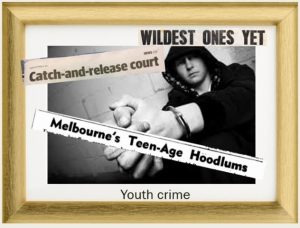5 Understanding and addressing social ‘problems’
When seeking to understand and address social problems, several broader questions emerge for us as social scientists. Firstly, what are social problems? Any answer to this question is always underpinned by different theories of the social world, what it means to us, and how it could be organised differently.
Evan Willis (2004:8-9) presents a distinction between sociological problems and social problems. Sociological problems are of an intellectual nature, something that needs to be understood or explained. Such problems tend to be more general, questioning the broad structuring of society and how certain social formations operate. Social problems, on the other hand, are more specific, focusing on a particular aspect of society that can be said to be problematic and in need of a solution. Often these two kind of problems overlap when explaining a social issue. One example is the issue of affordable housing. The sociological problem would be to consider how the housing market and capitalist economy broadly manufactures a shortage by artificially inflating house prices, withholding vacant properties, and engaging in market speculation. The social problem would lead us to consider what could be done to provide more affordable housing, through policy changes and concrete solutions that address the problem at this point in time. Both are necessary tools for social scientists to both understand the root of social issues, and to practically improve the real conditions of society.
Ultimately, social scientists observe the specific features of society and its organisation. These elements include structures, institutions, and role of human agency. Identifying problematic elements then allows us to ponder the question: how should the world look? From this, certain areas of society may need to be reconceptualised. One example could be the class structure, where the working class produces profit for the class that own property and the means of production. A solution could be to reorganise labour so that those that work receive what they have earned. Whilst such a solution may seem unlikely, the job of social scientists is to see past the barriers that prevent change by striving for a better world for all. This kind of ‘blue sky thinking’ is what allows society’s to progress, by imagining an ideal world without social problems and then endeavouring to get as close as possible.
Reflection exercise
After reading the above section, take a piece of paper and write down what you believe are the five most important social problems in your society. Then ask yourself:
- How might we approach these issues as sociological problems? What kinds of questions might we ask, and how might we find the answers?
- How might we approach these issues as social problems? What kinds of questions might we ask, and how might we seek to address them?
Reflection exercise
Watch the below video, which provides a brief overview of Bacchi’s view of public policy (YouTube, 2:02):
As you watch the above video, think about whether its explanation of the WPR approach aligns with your own understanding. Were there any bits of the reading or approach you found particularly difficult or confusing?
Reflection exercise
Access and read/listen to the blog and podcast by Cairney, below:
- Cairney, P. 2015. Blog and podcast: policy concepts in 1000 words – ‘framing’.
After reading/listening to the above, complete the following activities:
- After completing the reading/podcast, write a short paragraph (e.g., 100 words) outlining your understanding of the concept of framing.
- After thinking about the above framing of youth crime, including what is included/excluded from the frame, and how the ‘problem’ of youth crime might be framed differently, share and discuss your answers with your peers.
Reflection exercise
Think about Foucault’s conception of power and knowledge, which was discussed in Chapter 3. How might this relate to Carol Bacchi’s ‘WPR’ approach? In particular, how can ‘frames’ construct ‘truth’, and how can/does this relate to power?
We can use the WPR approach – particularly questions 1 and 4 – to help us unpack the ‘framing’ of a range of social issues, including those framings that are reflected in media headlines. Read through the below practice headlines and complete the exercises attached to them to support your understanding of framing.
Reflection exercise
Have a look at your local newspaper coverage of asylum seekers and refugees and check online for news stories about people seeking asylum.
Now, consider the headline “Smiling asylum” on the media report pictured from an Australian newspaper.
Smiling Asylum. 14,000 boat people ready to launch mission to Australia – @SharriMarkson @petermichaelNQ @dailytelegraph #frontpagestoday #Australia #TheDailyTelegraph pic.twitter.com/3A5UHZ3R3R
— 𝙵𝚛𝚘𝚗𝚝 𝙿𝚊𝚐𝚎𝚜 𝚃𝚘𝚍𝚊𝚢 📰 (@ukpapers) August 27, 2018
Then consider the questions below.
-
- How does the headline frame the issue of asylum seeking?
- What is missing from this framing of the issue?
- Rewrite this headline to reflect a ‘fairer’ and ‘fuller’ framing of the social issue at hand.
- Write a few short paragraphs to justify your revised headline.



